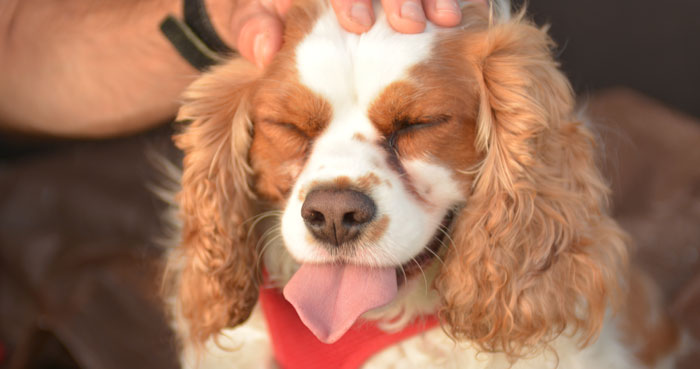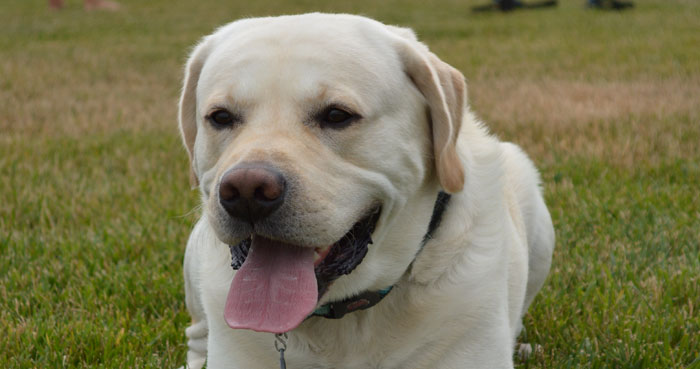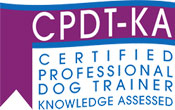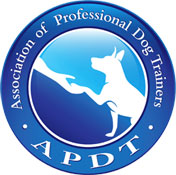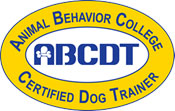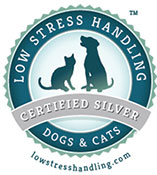Here are answers to some of our most common questions...
but remember, every dog and every owner is different so feel free to contact us with questions of your own!
What is Positive Reinforcement?
Positive reinforcement involves rewarding your dog with something he or she likes for doing what you ask of them. Your dog learns that good things happen when they do what is asked of them. This has been proven much more effective than previously used punishment techniques because it gives your dog a choice- your dog is motivated to try new things because they know a reward is waiting for them if they do it right and they will not get in trouble for being confused! In recent years, there has been overwhelming evidence that focusing on rewards instead of punishments leads to a better, more motivated learner. This usually involves treats initially, as it is a quick way to let dogs know they did the right thing and it is a primary reinforcer- dogs like food without any conditioning!
Why don't you use punishment techniques? I used to have a dog who did just fine with them.
I am a woman of science folks. I like science and I like to learn.. and I love dogs. The overwhelming body of evidence that there is fallout from punishment. Coupled with the positive outcomes I have seen over the last 15 years training without punitive techniques are evidence enough for me that these methods are simply not necessary. Some dogs seem to do ok with punishment, but for many it can lead to frustration, fear, anxiety, aggression and other behavioral problems. Your dog can begin to fear you, the tools, treats, or worse- associate that sharp tug on the leash with the kids walking by and develop a dislike for children. I prefer to use methods that will not cause dogs to have fear, rather to build their confidence in themselves and trust in their human families- a dog who is open minded and willing to try new things is as much fun as a person who is open minded and willing to try new things!
What are all those letters after your name, do they really mean anything?
Unfortunately, there is no regulation in the dog training industry for education or continuing education. On one hand this is fantastic as it allows people who truly love dogs to work with them daily. On the other hand, it opens up the industry to individuals who may have limited or outdated knowledge about canine behavior and learning theory. Without a thorough understanding of learning theory, canine behavior, and the many differences between dogs, wolves and their common ancestor, it is easy to misunderstand signals that dogs give and to cause permanent psychological and physical trauma (especially using coercive or force-based training techniques). You will find many trainers are choosing to align with organizations they feel are morally acceptable. I am one of those people.
A trainer who has CPDT-KA designation means they have passed a test which assesses their knowledge of six core areas: Instruction Skills, Animal Husbandry, Ethology, Learning Science Techniques and Applications, Training and Management Equipment, and Professional Practices and Ethics. To even sit for the exam, the trainer must have at least 300 hours of documented time working as lead trainer in a classroom and private lessons; in addition they must attend seminars and conferences to gain Continuing Education Units in the field to stay up to date. For more about the test, click here. A trainer who is a member of the APDT is someone who is committed to using exclusively positive reinforcement and reward based techniques in training. Although there are good trainers without any of these letters following their name, choosing someone who does means that they have the knowledge and skills necessary to help with training and behavior issues and a network of other trainers across the globe to assist them!
Fear Free and Low Stress Handling Certified practitioners have completed coursework related to handling of cats and dogs specifically in a veterinary and grooming scenario to reduce stress. At times aggression toward new people is prompted by a stressful vet or groomer visit. By no means does this indicate that a vet or groomer is unkind, just that they were likely rushed by the fast pace of life. As a Fear Free and Low Stress Handling Certified trainer, I can help pet guardians to train cooperative care techniques which can then be utilized at the vet or groomer. By reducing that stress and making these necessary health visits easier on everyone, dogs live healthier lives!
For more about these organizations, check out their websites: CCPDT, APDT, Low Stress Handling, Fear Free Pets

